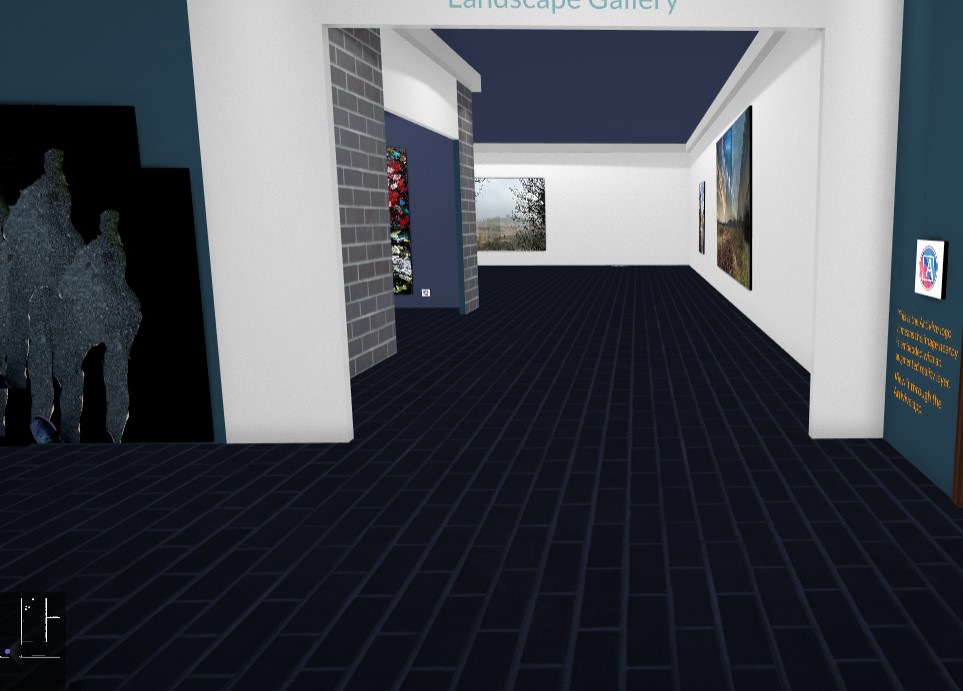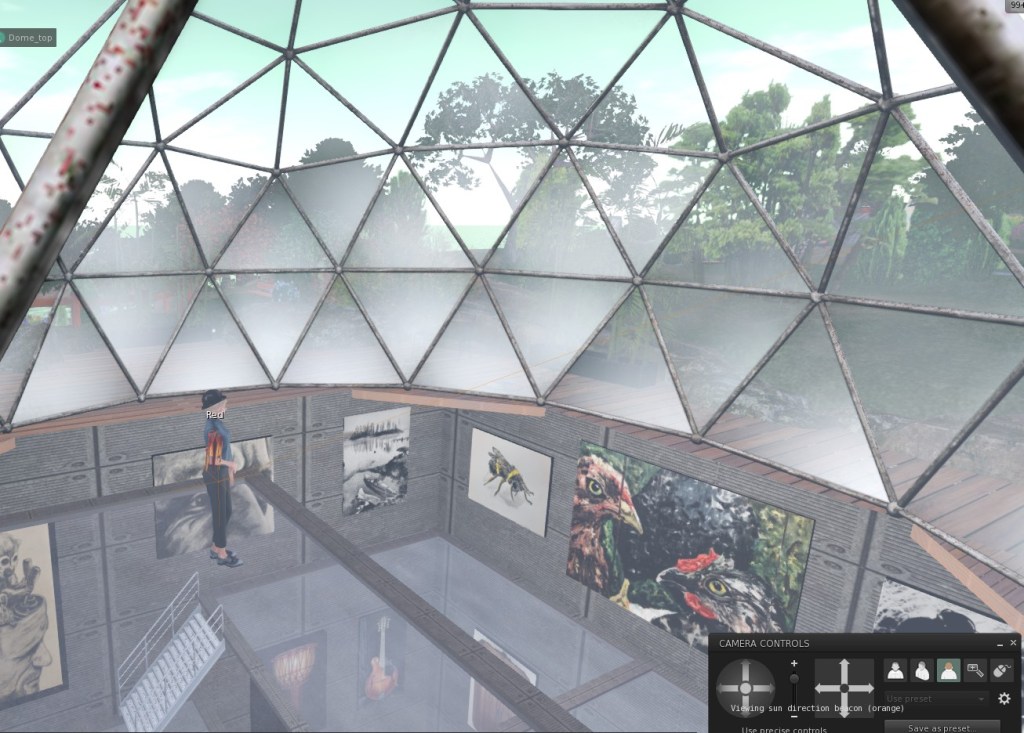When access to physical gallery space is limited, you have to look for other options and there are several, some more based in the real world than others.
The first is to use photographs of, for instance, a scene across a field, then layering a to-be-exhibited piece of work into it.

This allows for a video/powerpoint trail of still images anywhere in the world, assuming you have the rights to the original photo. Other options include asking local businesses, neighbours, the owners of suitable walls, if they mind having their property included in a similarly invisible trail. Although, if there’s a decent mobile signal and the target unique enough, it could include an AR layer and that could lead to visitors aiming their phones at your bins.
This is my garage door. Flash Artivive at it and voila, rock festival.

The second is a YouTube video trail with or without commentary or titles. This requires a YouTube Creator account but means you can embed the video in blogging platforms such as WordPress.
Third is a very neat little platform called Artsteps which allows for the placing of art pieces in a self-built gallery – and putting that together can be an interesting experience in itself – or a ready-made one. I have three, only one of which is a paid-for space.
Working Title Gallery https://www.artsteps.com/view/6493359936c60066a300bc29 This is the paid environment and from what I can see, video is permitted. I can’t change anything about it though, unlike the self-builds where I can change the shape, the colours, the lighting, and various textures.

Strayfish Gallery https://www.artsteps.com/view/63cc3569c0a4cb48a02c254e was built from scratch, hence the rather eccentric shape. This was my first but recently I found I could add new builds to it and so it has additional rooms of a more conventional shape.

These, plus Best Little Virtual Gallery (https://www.artsteps.com/view/63cc2133ab6da6cded3e1619) – a crit group collaboration now due for a refresh – have given me experience of curation.

Fourth is the king (or queen) of VR, Second Life; a virtual world created in 2003 and built by its residents with no underlying game structure. I haven’t built there but a quick query about gallery space has led to an invitation to exhibit from May in what seems to be quite a nice environment. The contact gave me the link to this video which explains how to size and site work. It’s technologically rich and useful despite the brain-glitch incongruity of a presenter avatar set to adopt a voluptuous pose every few seconds.
In practice, this is not much different from installing artwork on the Artsteps platform. Getting the dimensions resized before uploading saves a lot of time but I’ve yet to figure out how essential picture frames are*.
April 18th. Making framed pictures in Second Life is proving tricky. Unlike Arsteps where the frame snaps around the image, here I have to build the frame, apply the image as texture, then somehow get both of them lined up straight in all three orientations on a wall. When I did that, or thought I did, Artivive registered it as angled outwards so at a guess, I hadn’t really got the image flat onto the virtual surface.
Nope! It doesn’t seem to be that. After a great deal of effort involving the presence or absence of frames, I’m going to guess that Artivive is struggling with Havok physics, the underlying engine of Second Life. While Second Life has no game structure in that there are no goals or teams, the environment is game-based and allows for much more sophisticated avatar and environmental interactions. Collisions, for instance, can knock your avatar off its feet; jumping from a height results in a landing crouch and a stumble. There is nothing similar in Artsteps; in fact avatars have no visible form; just a thin outline, a ghost, to indicate the presence of another visitor. That increased level of sophistication may be outside Artivive’s own engineering so that it’s unable to determine the orientation of the target. I have contacted the app’s developers for their thoughts and I will update this post in accordance with developments. This includes liaising with my initial contact in Second Life who is very keen to host a first attempt to do this.
20th April. This is quite the accelerated learning curve, going from user to builder in a day even though it’s just a cube, greatly reduced along one axis. The video shows the house generously loaned to me by another SL resident so that I could get to grips with framing and mounting my work prior to moving to the nearby exhibition site. I’ve also taken the opportunity to show off my new cube-wrangling skills!
3rd May and we have a functioning exhibition in Second Life that seems also to support Artivive AR. The resolutions are a little frisky, but this is a first and I am a novice builder.
Here’s an in-world video taken using screen capture by MultiCam.
There are plans to hold an in-world opening which may include a workshop so more of that later!
SCH 2024
This post made public on May 3rd 2024.
*Note: they aren’t. Instead you ‘rezz’ (resolve) a cube, re-shape it to form a rectangular base, then apply the image as texture.
